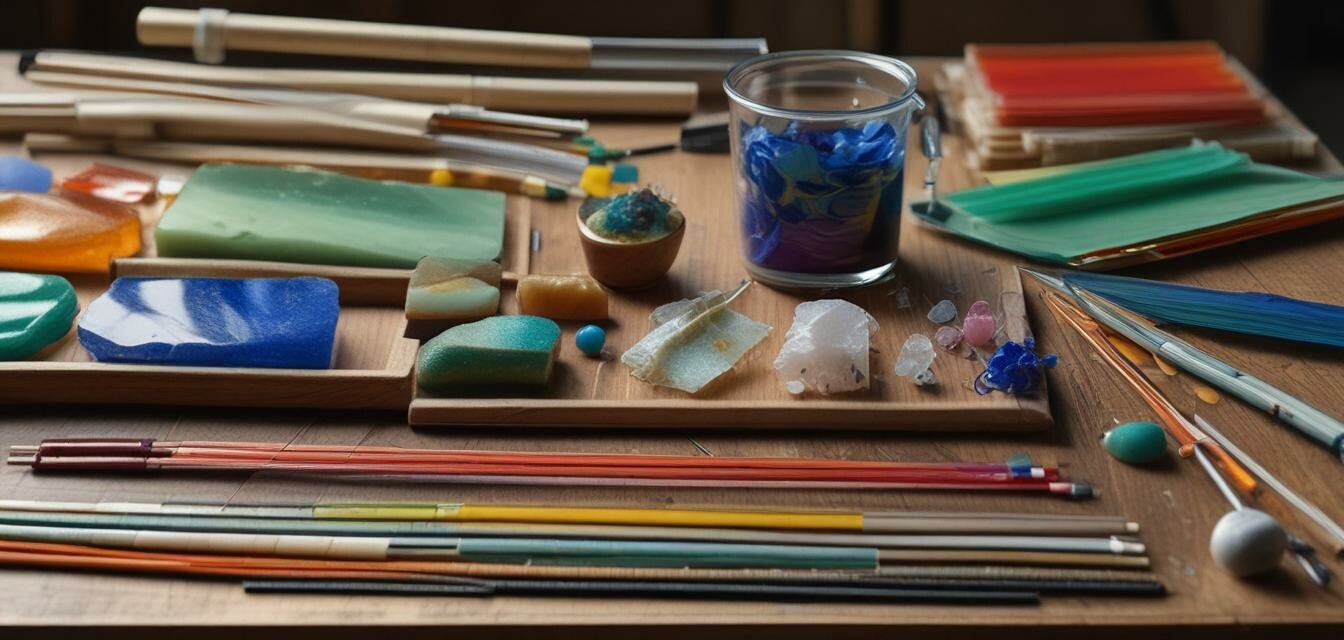
Essential Safety Practices When Working with Glass
Key Takeaways
- Always wear appropriate personal protective equipment (PPE).
- Handle glass carefully to avoid cuts and breakage.
- Keep your workspace organized to prevent accidents.
- Properly store glass materials and tools.
- Familiarize yourself with emergency procedures.
Glass making is an exciting and creative endeavor, but safety should always be a priority. Whether you're a seasoned artist or just starting out, understanding and implementing essential safety practices is crucial to enjoying the glass crafting process while minimizing risks. In this article, we will go over key safety measures every glass artist should consider to ensure a safe workshop environment.
Understanding the Risks
Working with glass can present various hazards ranging from cuts to exposure to harmful fumes when utilizing different tools and materials. Here are some common hazards:
- Sharp glass edges and shards
- Heavy lifting injuries
- Inhalation of fumes and dust
- Improper tool handling
- Injuries from heat sources
Personal Protective Equipment (PPE)
Investing in the right personal protective equipment is a vital step in safeguarding yourself while working with glass. Below are recommended items:
| Protective Gear | Purpose |
|---|---|
| Safety glasses or goggles | To protect eyes from flying glass particles |
| Cut-resistant gloves | To protect hands from cuts and punctures |
| Aprons | To protect clothing and skin from glass shards |
| Steel-toed boots | To protect feet from falling objects |
| Respirators | To prevent inhalation of harmful dust and fumes |
Safe Handling of Glass Materials
Properly handling glass materials is essential in preventing accidents. Here are tips to follow:
- Always inspect glass for cracks or defects before use.
- Use both hands when lifting large or heavy sheets of glass.
- Keep fingers away from sharp edges when cutting or handling glass.
- Store glass in a secure, upright position on a padded surface.
Tool Safety
The tools you use while working with glass can also be a source of danger if not handled correctly. Consider these safety practices:
- Use the right tool for the job to prevent breaking glass.
- Keep your tools clean and in good condition to ensure they function properly.
- Never use damaged tools, and replace them immediately.
- Follow the instructions and guidelines for all tools and equipment.
- Store tools safely when not in use to prevent accidents.
Workshop Organization
Keeping your workspace organized will help minimize risks and make your work more efficient. Use the following tips:
- Maintain a clean work area by regularly removing scraps and debris.
- Label all containers and storage areas for easy access.
- Ensure there is sufficient lighting in the workspace to see clearly.
- Use proper storage techniques for heavy or awkward items.
- Establish a specific place for each tool and material to prevent clutter.
Emergency Procedures
In case of an accident, being prepared can help mitigate injuries. Take time to familiarize yourself with the following emergency procedures:
- Know the locations of first aid kits and fire extinguishers.
- Have a clear plan for what to do in case of broken glass or injury.
- Keep emergency contact numbers easily accessible.
- Conduct regular safety drills to highlight the importance of readiness.
Conclusion
By following these essential safety practices, glass artists can create a safer workshop environment. Remember that safety is not just about wearing protective gear but also involves developing habits that prioritize your well-being. For more information on glass making supplies, visit our Glass Sheets and Supplies page. Always stay informed and prepared to enjoy the creative journey of glass crafting!
Pros
- Prioritizing safety minimizes the risk of accidents.
- Using protective gear enhances your work experience.
- An organized workspace can increase productivity.
- Awareness of procedures helps in emergency situations.
Cons
- Initial costs for safety equipment can add up.
- Safety protocols might slow down the work process at first.

